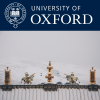Treasure and archaeology: reflections on the Begram hoard and the interpretation of deposits of valuable objects (Oxford Treasure Seminar Series)
Of its many referents in archaeology, ‘treasure’ can also describe rediscovered deposits of valuables, which are widespread in the global archaeological record, and can illuminate various social, ritual, economic, and historical phenomena. Realising this capacity, however, implies interpreting the nature of these deposits – something highly theorised in some domains of archaeology (e.g., Bronze Age Europe; numismatics), and barely of interest in others. Pivoting around the case of the ‘hoard’ of valuable objects discovered at Begram in Afghanistan – deposited between the late 3rd/early 4th century CE and always interpreted as concealed for safekeeping but unluckily never recovered – I present an eclectic review of how such ‘treasure’ has been negotiated in various archaeological traditions. This includes classificatory schemes attempting to distinguish ritual (e.g., votive, funerary, without intending recovery) vs. utilitarian (e.g., temporary safekeeping) deposits, and criticisms of the validity and utility of these categories. I conclude by considering which ‘universal’ insights may emerge from these debates, and the open question of their compatibility with textually documented historical conceptions and traditions of treasure.




